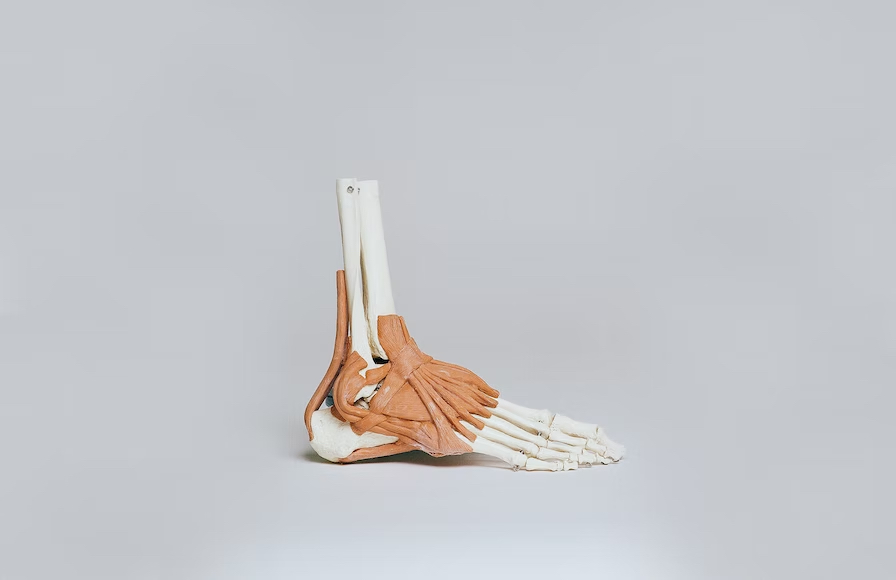Sprains are very common injury that affect the muscles and ligaments. An ankle is one of the most common places to strain due to its vulnerability to twisting and breaking, and where it is in the body. Sprains often occur if you suddenly fall, land too hard or awkwardly or collide with another person or an object. With your ankle, you can sprain it if you accidentally put weight on the wrong/outside of your foot – particularly a hazard for those high heel wearers! Putting weight on this outside of your foot can cause the outer ligament to tear or stretch too much. Sporting injuries are the main cause of a sprained ankle.
How to avoid a sprained ankle
- Warm-up before exercising or playing any type of physical sport.
- Practice exercising regularly – a lack of exercise can weaken your muscles and joints, which means they will become less flexible and therefore you can be more prone to sprains and other related injuries.
- Don’t tire out your muscles to an extreme level – if you have tired muscles, they are less likely to be able to adequately support your joints. Similarly, when you are tired you will have more trouble controlling the movements of your body generally.
- Wear appropriate footwear – you must choose footwear which supports your ankle and feet. This is just specific to when playing sports or running, but also to work or at home, so make sure your footwear is appropriate for what you are doing. Avoid very high heels, especially when walking on non-flat ground.
- Take precautions against falling; keep stairs and any walkways clear of clutter. When there is ice, make sure you are wearing appropriate shoes and have put salt on the ice around your house.
- Avoid running, jogging or walking fast on uneven ground
- Do not jump onto hard grounds or from too high or low distance.
- Eat well to keep joints and ligaments strong.
Treatment of a sprained ankle.
Most of the time, sprains can be managed at home with the aid of painkillers to ease any pain.
Treating the pain can be achieved by simply taking paracetamol or other similar painkillers. If you find this does not do the job, you may need to opt for something a little stronger such a codeine, however you will have to be prescribed this as it is very strong. If you see your GP, he or she may offer to prescribe a non-steroidal anti-inflammatory drug (NSAID) cream or gel to rub on to the affected area to treat pain. You can also get oral NSAID’s, such as ibuprofen tablets; these can aid the reduction of swelling and inflammation.
Physiotherapy is also an option for more severe cases of a sprained ankle. You doctor will refer you for physiotherapy, so leave it in the hands of professionals to determine whether this is necessary. Physiotherapy aims to help to restore the function and movement of the injured area through a range of exercises. Physiotherapy may be beneficial long-term, as it can reduce your risk of future injury to that certain area.
Surgery
While it is rare to need surgery for a sprained ankle, in some cases it may be necessary. Surgery is not commonly carried out because it can be unclear whether it would be effective, or cause any further complications in some cases. It is normally only required for severe muscle strains and is particularly common in those who are in a professional sporting career.
When it is deemed necessary for surgery, it is usually because it has been decided by a doctor that the muscle may not regain its former strength, and a person’s performance in sport or even quality of life may be affected. Read about ankle surgery here.
Recovery time for sprained ankle
Depending on how severe the sprain is, determines how long the recovery time is. And this can vary from person to person, depending on many factors including health and age.
Typically an ankle sprain will require around a week or two for you to be able to walk properly again. Full recovery usually takes around six to eight weeks, and at this point you will be able to use your ankle again fully. You should hold off sporting for about eight to twelve weeks however, as it can increase your risk of another sprain if you put too much pressure on it immediately.
Some people who sprain their ankle complain on pro-longed complications and continued problems. These can include general pain in the area of injury, persistent swelling, instability and this can last for months or even years after the original sprain.
If your condition doesn’t improve after the typical recovery time or your symptoms worsen, contact your GP. You may need further treatment and further assessments.

